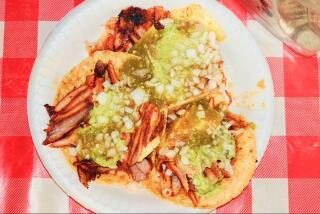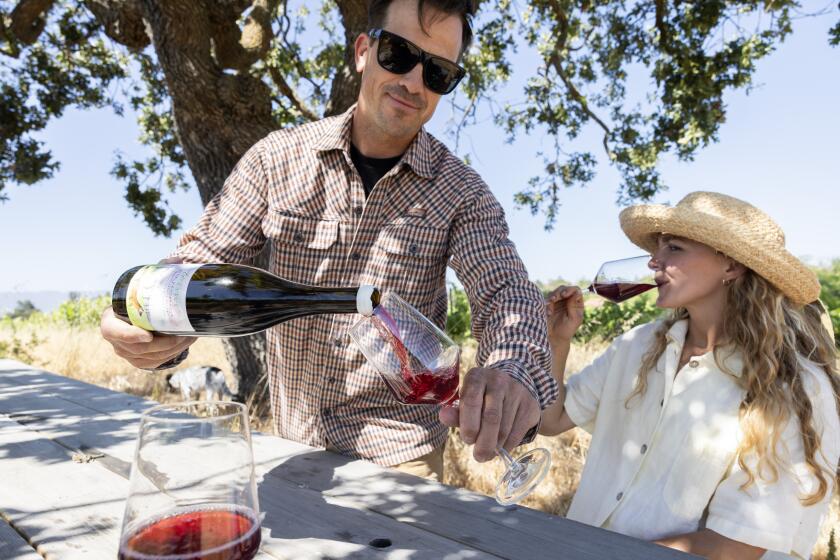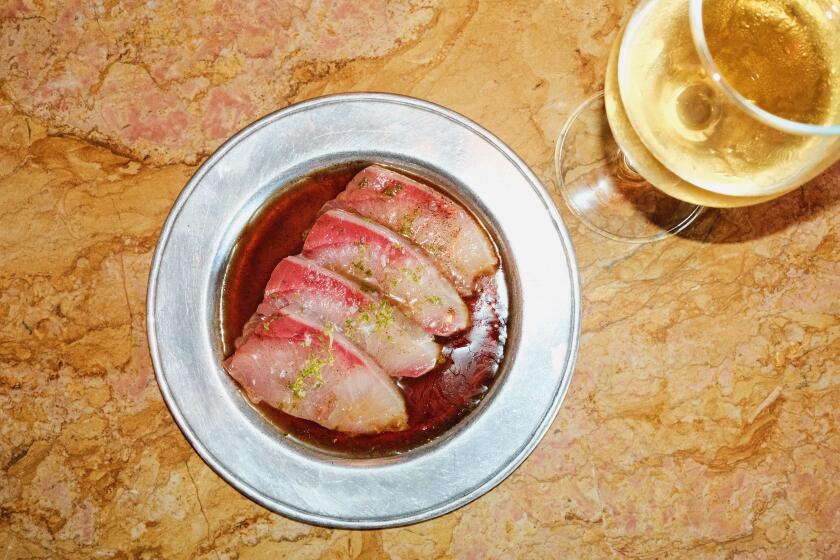2 Small Producers of Super-Premium Wines to Merge
Chalone and Acacia, two of California’s most prestigious, though small, strongholds of super-premium Burgundian wines, have announced their prospective marriage by signing a letter of intent to merge.
Under the plan, announced last week, Chalone would complete the purchase of Acacia in August for an undisclosed price. The wineries are acknowledged as producing among the best of California Chardonnay and Pinot Noir.
Chalone, founded in 1970, went public about two years ago and owns Carmenet Vineyard in Sonoma Valley, producing Cabernet Sauvignon and Sauvignon Blanc, and Edna Valley Vineyard in San Luis Obispo, producing Chardonnay and blushy Pinot Noir.
Chalone, a dry, rather ecologically deprived outpost huddling on a mountain some 2,000 feet above Soledad, 130 miles south of San Francisco, is a strange undertaking. As modern wineries go, Chalone is back in the Stone Age.
This flagship winery of the Chalone operation generates its own electricity with butane, has only relatively primitive radiotelephone service and until recently had to haul water by tank truck up the mountain to feed the thirsty vines. In return for the backbreaking work, nature has yielded the rarefied upper strata of the premiums.
If anything, it shows that convenience of operation has nothing to do with the making of quality wine. The wines are recommended among the best in any decent vintage year.
Together, Acacia and Chalone and properties can bottle about 3,500 cases a day, according to their entries in a commercial wine registry. By comparison, Gallo, the Modesto-based largest wine maker in the world, packs about 250,000 cases a day.
Richard H. Graff, Chalone chairman and chief operating officer, said the prospective deal with Acacia “fits in perfectly with our philosophy of keeping our wineries of limited size. Each winery is run by its own wine maker and staff, and each is small enough that every barrel of wine can receive the necessary personal attention.” Chalone markets at retail in the range of the high teens to the high 20s for its reserve bottlings, the latter available only to a mailing list. Acacia wines sell in the mid-teens.
Acacia’s operation, established only seven years ago, is situated in Carneros at the southern end of Napa Valley. The vines grow in sparse, tough soil where the micro-climate is cool and the growing season is long. Some of the world’s best wines come from gritty, gravelly, chalky soils; the vines don’t like to be pampered.
Acacia is a member of a tiny group of Napa Valley vintners who include on their labels the specific vineyards or areas where the grapes are grown.
More to Read
Eat your way across L.A.
Get our weekly Tasting Notes newsletter for reviews, news and more.
You may occasionally receive promotional content from the Los Angeles Times.








![LOS ANGELES, CA - JUNE 17: [Cody Ma and Misha Sesar share a few dishes from their Persian Restaurant Azizam] on Monday, June 17, 2024 in Los Angeles, CA. (Ethan Benavidez / For The Times)](https://ca-times.brightspotcdn.com/dims4/default/6852a0e/2147483647/strip/true/crop/5126x3417+298+0/resize/840x560!/quality/75/?url=https%3A%2F%2Fcalifornia-times-brightspot.s3.amazonaws.com%2F79%2Fdc%2F4d29255545f5b9813315901692bc%2F1459972-fo-azizam-review20-eba.JPG)

